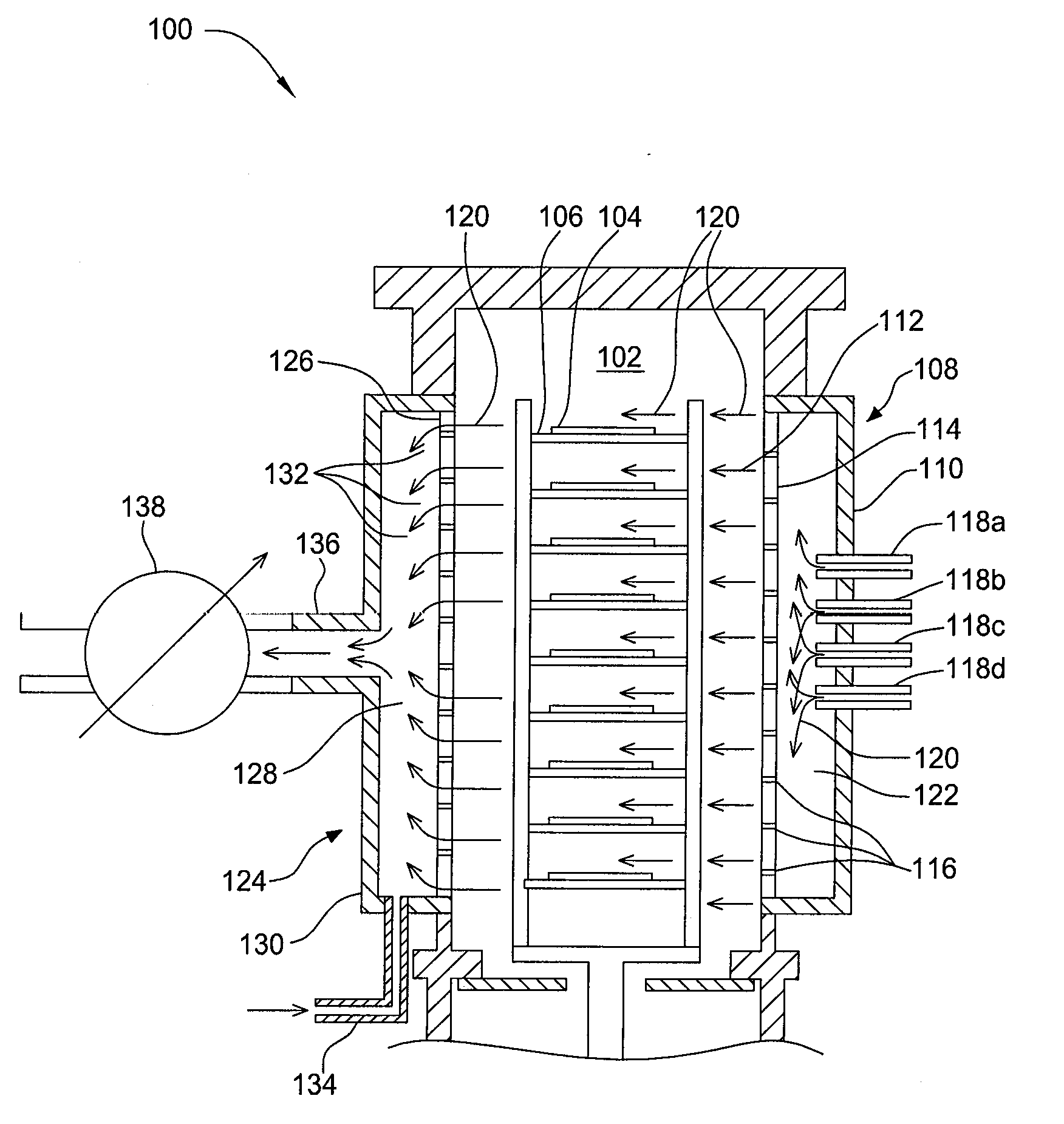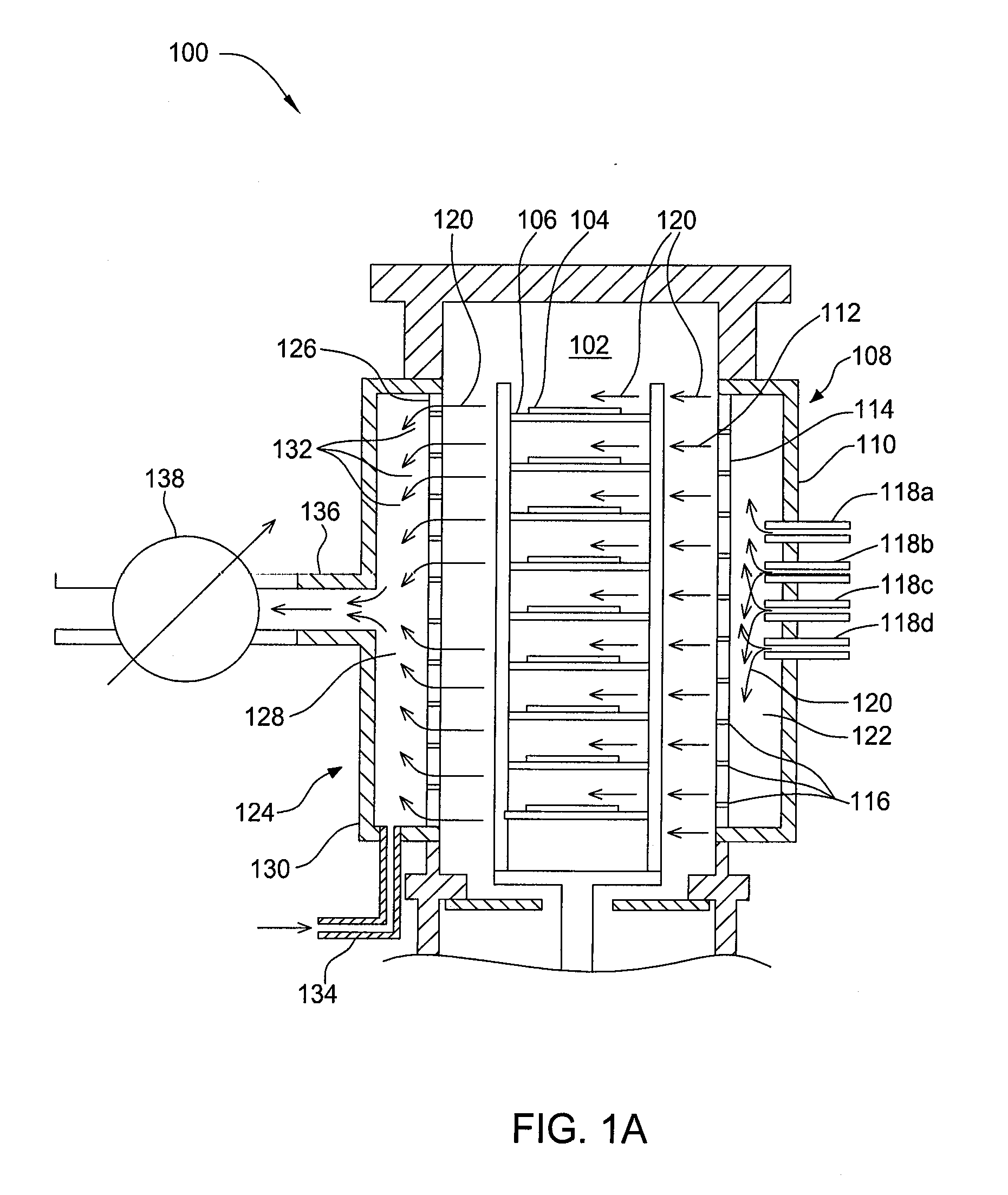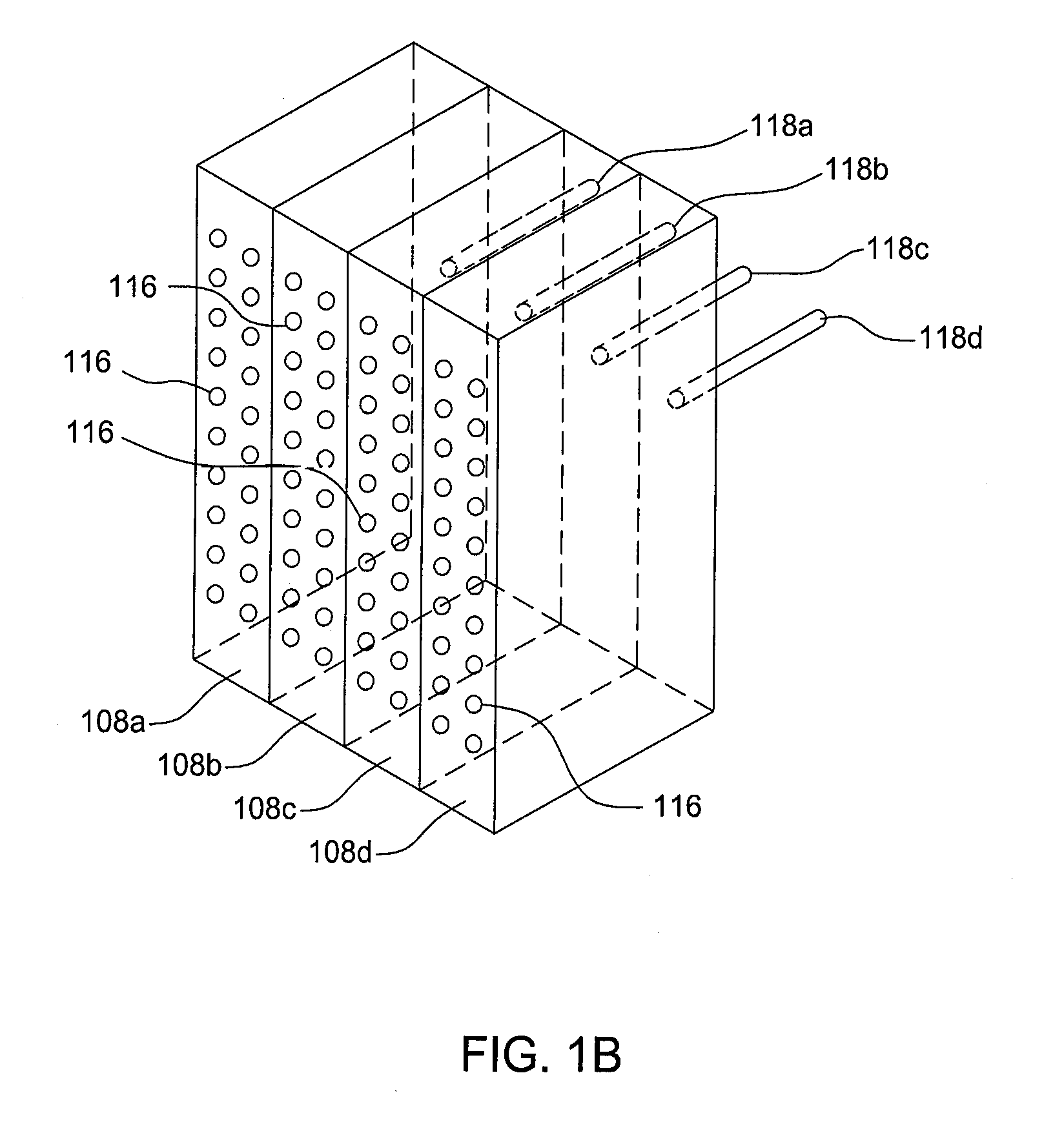Method of depositing catalyst assisted silicates of high-k materials
a technology of catalyst and silicate, which is applied in the field of depositing a hafnium silicate layer, can solve the problems of increasing the size and aspect ratio of features, and many challenges for oxidizing sources
- Summary
- Abstract
- Description
- Claims
- Application Information
AI Technical Summary
Benefits of technology
Problems solved by technology
Method used
Image
Examples
Embodiment Construction
[0021]A hafnium silicate ALD method is described to exemplify high-k silicon methods. To produce a hafnium silicate layer, a substrate may be exposed to a pulse of a hafnium precursor, a pulse of an oxidizer, a pulse of a silicon precursor, and a pulse of another oxidizer. A catalyst may additionally be co-flowed with one or more reactants into the chamber through a separate inlet. Alternatively, the catalyst may be flowed to the chamber before the reactant is introduced in a soaking procedure. By either co-flowing the catalyst through separate inlets or by performing a catalyst soak, hafnium silicate formation may proceed at a fast rate and / or at a low temperature.
[0022]FIG. 1A is a schematic representation of an apparatus 100 according to one embodiment of the invention. The apparatus 100 comprises a vacuum chamber 102. The apparatus 100 may be a batch apparatus 100 that may contain one or more susceptors 106 upon which a substrate 104 may be placed. In one embodiment, the apparat...
PUM
 Login to View More
Login to View More Abstract
Description
Claims
Application Information
 Login to View More
Login to View More - R&D
- Intellectual Property
- Life Sciences
- Materials
- Tech Scout
- Unparalleled Data Quality
- Higher Quality Content
- 60% Fewer Hallucinations
Browse by: Latest US Patents, China's latest patents, Technical Efficacy Thesaurus, Application Domain, Technology Topic, Popular Technical Reports.
© 2025 PatSnap. All rights reserved.Legal|Privacy policy|Modern Slavery Act Transparency Statement|Sitemap|About US| Contact US: help@patsnap.com



